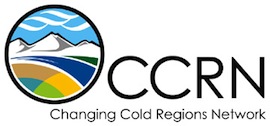Pseudo Global Warming
Information Brochure
A summary of the future changes in temperature and precipitation (2001-2015 vs. 2086-2100) including a brief description of the PGW method can be found in our information brochure.Additional Information
About the PGW Method
The PGW method is a new modelling approach that provides high resolution (up to 4 km grid) future climate conditions without the need for an ensemble of simulations. This information can give insight into future hydrological, meteorological and atmospheric conditions at a local scale where the precipitation is influenced by topography and convection.
The PGW method adds a climate perturbation signal to a present-day conditions during the future period of interest. The initial and boundary conditions are generated by coupling 6-hourly reanalysis data (ERA-Interim reanalysis) and climatological monthly mean perturbations of global warming that are extracted from Atmosphere-Ocean coupled General Circulation Models (AOGCM). The result is the forcing data for the future climate, called the PGW condition. It can then be dynamically downscaled by using the Weather Research and Forecasting (WRF) regional weather and climate model. The downscaled PGW condition is then compared to the historical condition (also downscaled) developed from ERA-Interim reanalysis data to determine the projected change in future climate.
This process can be repeated using various future greenhouse gas concentrations trajectories (RCP2.6, RCP4.5, RCP6.0, RCP8.5) to come up with a range of possible future climatic scenarios.
Advantages of using the PGW Method?
Future climate predictions are commonly estimated by the General Circulation Model (GCM) which has a low horizontal resolution of 0.75 to 1 degree (>100 km). Due to the low resolution in current GCM runs, the impact of the complex terrain are poorly represented and can’t be used to estimate climate change in a small region. In order to downscale GCM runs, a common method includes applying a bias correction followed by use of statistical downscaling methods to distribute the precipitation according to present-day observations. This method introduces potentially large biases and lacks the representation of topographic and convective precipitation.
The PGW approach uses a dynamical downscaling technique to obtain future climate conditions at higher resolutions (up to 4 km) and is considered more sophisticated than other approaches to represent the atmosphere and land surface change, both dynamically and physically. Large scale model biases are reduced by using the PGW approach and can be used to compare the current and future climate without an ensemble of simulations.
How CCRN is using PGW data
Researchers are currently using the PGW method to explore atmospheric, meteorological and hydrological aspects of our future climate. Some examples include:
- Investigate the future impacts of global warming on the hydrology and atmosphere in the Saskatchewan and Mackenzie River Basins.
- Improve the understanding of hydrological processes and snowpack modelling across Western Canada.
- Modelling various atmospheric processes responsible for severe weather, convection, and freezing rain under future climate scenarios.
- Investigate historical extreme events (i.e. 2013 June flood in Alberta) under future climate scenarios.
Possible Output Variables
There are numerous output variables that are produced by the WRF model simulations in the PGW method. The following table summarizes the possible variables categorized into three classes:
- Class A: 1 hour timescale, 2-dimensional
- Class B: 3 hour timescale, 2-dimensional
- Class C: 3 hour timescale, 3-dimensional
| Class A Variables | Class B Variables | Class C Variables |
|
|
|
Resources
Reference Links
YouTube Video
Yanping Li and her research team work with atmospheric scientists in locations like the National Centre for Atmospheric Research centre in Boulder, Colorado to understand how climate change is impacting weather systems.
List of Presentations
Modelling studies of regional climate of Western Canada using 4-km WRF - Sopan Kurkute, September 28, 2015
The western Canada high resolution WRF simulation - Sopan Kurkute, October 3, 2016
4th Annual Update on CCRN Activities - Yanping Li, November 3, 2016
Convection-permitting WRF historical and pseudo-global warming simulations over CCRN region - Yanping Li, November 28, 2016
Convection-permitting WRF historical and pseudo-global warming simulations over CCRN region - Yanping Li, March 20, 2017
Convection -permitting WRF regional climate simulations over Western Canada - Yanping Li, June 19, 2017
